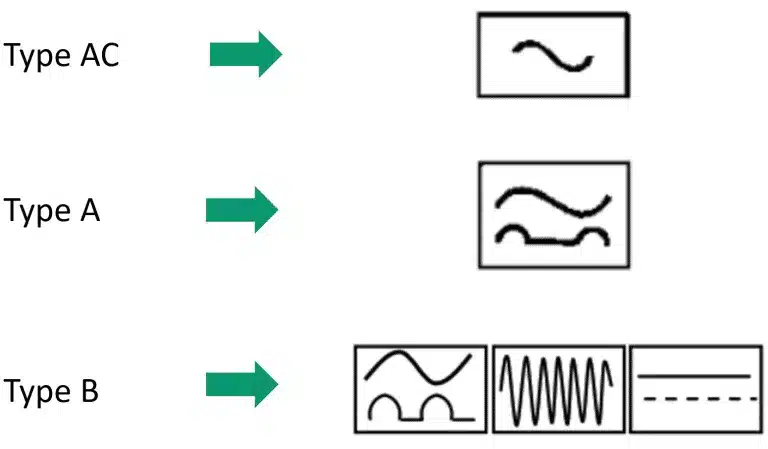Last edit: 09/11/2025

There is often confusion as to whether or not type B residual current devices (RCDs) are required to protect lines in which variable speed drives are used to control asynchronous motors: let’s clear up any doubts!
The Doubt
Is a type B Residual Current Device compulsory when using Variable Speed Drives or Power Drive Systems (PDS)?
Considerations
Residual Current Devices are of different types:
- Type AC RCDs: they detect residual sinusoidal alternating currents. Type AC RCDs are suitable for general use and cover most of the applications in practice.
- Type A RCDs: in addition to the detection characteristics of type AC, they can detect pulsating DC residual current.
- Type B RCDs: in addition to the detection characteristics of type A, they can detect a pure DC residual current, that may come from a fault inside a Variable Speed Drive.
Power Drive Systems have a product standard: EN 61800-5-1: Adjustable speed electrical power drive systems – Part 5-1: Safety requirements – Electrical, thermal and energy.
Hereafter what the standard specifies regarding the compulsory use of a Type B Residual Current Device.
[EN 61800-5-1: 2022] 6.3.9.5 Compatibility with RCD
[…] The caution notice shall be the following or equivalent:
“This product can cause a DC current in the PE conductor. Where a residual current-operated protective device (RCD) is used for protection against electric shock, only an RCD of Type B is allowed on the supply side of this product. All upstream RCD, up to the supply transformer, shall be of Type B.”
[…]
The important word in the above language is “Where”. The standard is telling us that if, in order to protect a machine or part of it from indirect contacts, the manufacturer must rely upon a RCD, it has to be a type B.
When do we need to rely upon RDC for indirect contacts?
1. In TN systems where the Circuit Breaker or Motor Controller is not able to open the fault loop within the time specified by the IEC 60204-1 standard (0,4 s or 5 s).
2. In most of TT systems (in Italy in all TT systems).
Conclusion
If your machine is installed in a TN system and you have verified that, in case of a fault, a magnetic protection (Branch Circuit Protection in USA Terminology) opens the fault loop, you do not need to install any RCD and in particular a Type B RCD is not required.